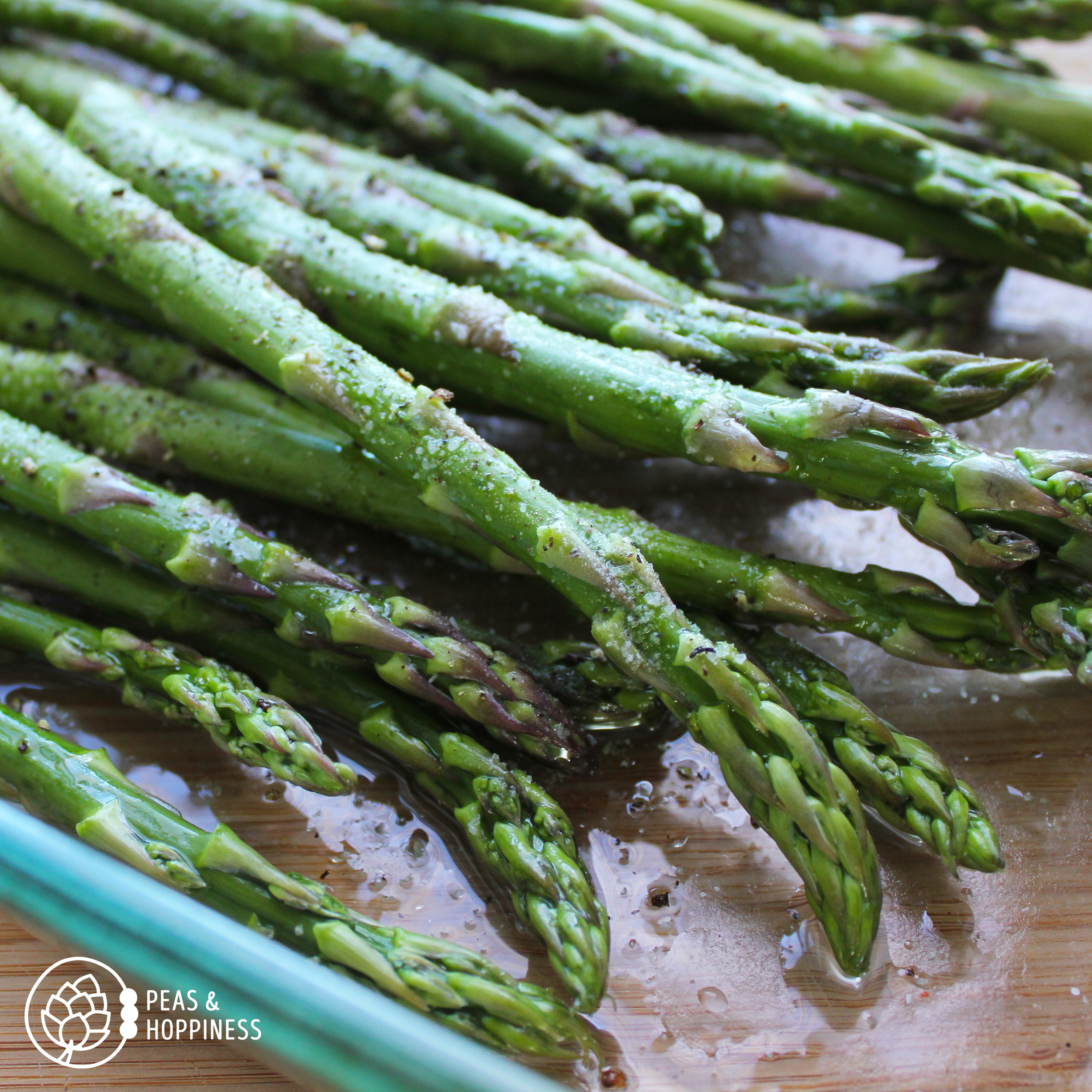
Spring is here! It’s that glorious time of year that brings erratic weather, pink blossoms on trees, and lawns with gradually deepening shades of green. But of course, my favorite thing about spring is the vegetables that start to grow.
Among my favorite spring vegetables is asparagus. Have you noticed that it’s been on sale at the grocery store lately? That means it’s in season!
How to Choose the Best Asparagus
Asparagus is in season in spring and early summer. It’s a perennial plant which is dormant over winter and reappears once days start to lengthen and become warmer. To harvest, the stalk is cut at an angle using a knife just under the ground.
Choosing asparagus when it’s in season means it will be more tender, flavorful, and more nutritious.
Why? Produce in season can be sourced closer to where you live, which means it can grow to the peak of ripeness – when produce is meant to be harvested! It also enjoys a shorter shipping time, so quality is maintained rather than losing flavor, texture quality, and nutrients during a long transit.
Look for thicker stalks in the grocery store that are nice and crisp – avoid stringy, limp stalks of asparagus. Most asparagus in the store is green, but white asparagus is a delicacy in some countries. It’s grown in darkness so the photosynthesis that creates the chlorophyllic green is absent; its flavor is mild and stalks are tender.
Pro tip: if you have a home with a place for a garden in the ground (not a planter box), consider taking advantage of your yard space and start an asparagus plot. You’ll look forward to your seasonal spring harvest of this veggie that’s best when it’s fresh!
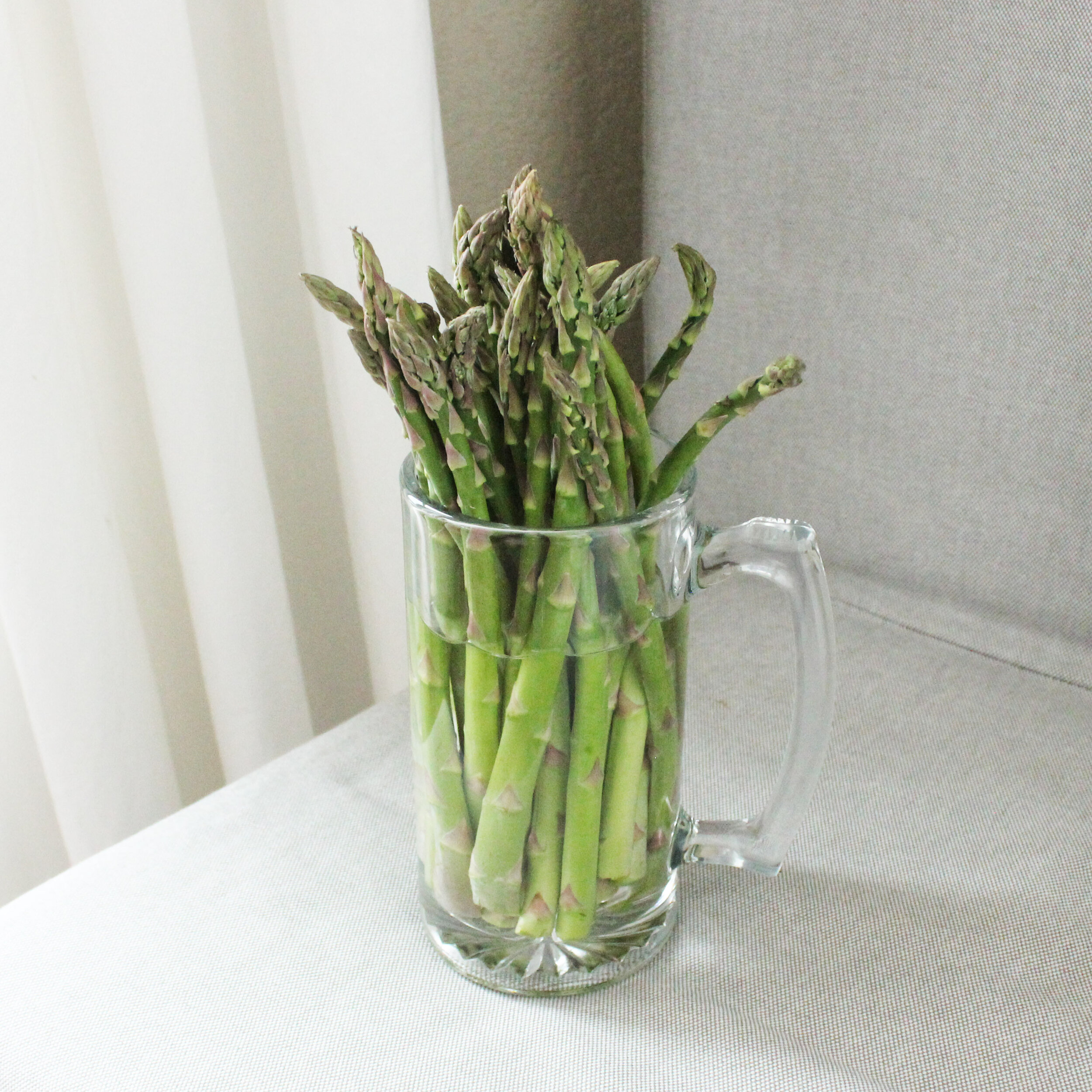
Store fresh asparagus like cut flowers, in a jar or vase with fresh water.
How to Store Fresh Asparagus
Fresh asparagus is best stored like cut flowers. When you bring it home from the farmer’s market or grocery store (or in from your garden), trim the base of asparagus while holding it under cold, running water.
Place the asparagus stalks in a jar of fresh water and refrigerate up to a week. The fresher the asparagus is, the longer it will last in the refrigerator. Store-bought asparagus, especially out of season, needs to be cooked within a few days.
Nutrition Information about Asparagus
Asparagus is low in Calories: Like other vegetables, asparagus has few calories, but lots of nutrition. One of the reasons is its high fiber content – a cup of cooked asparagus has only 40 calories but 4 grams of fiber.
Asparagus contains a multitude of antioxidants: Lutein, zeaxanthin, carotenes, and crypto-xanthins, oh my! These antioxidants support immune health, capture free radicals to reduce cancer risk, and may even help protect the body from neuro-degenerative diseases.
Vitamins & Minerals in Asparagus: The beautiful rich green color of asparagus hints at its great nutritional value. Asparagus is a very good source of a variety of B vitamins, vitamins A, C, E, and K. It is also a very good source of iron, copper, phosphorus, and potassium.
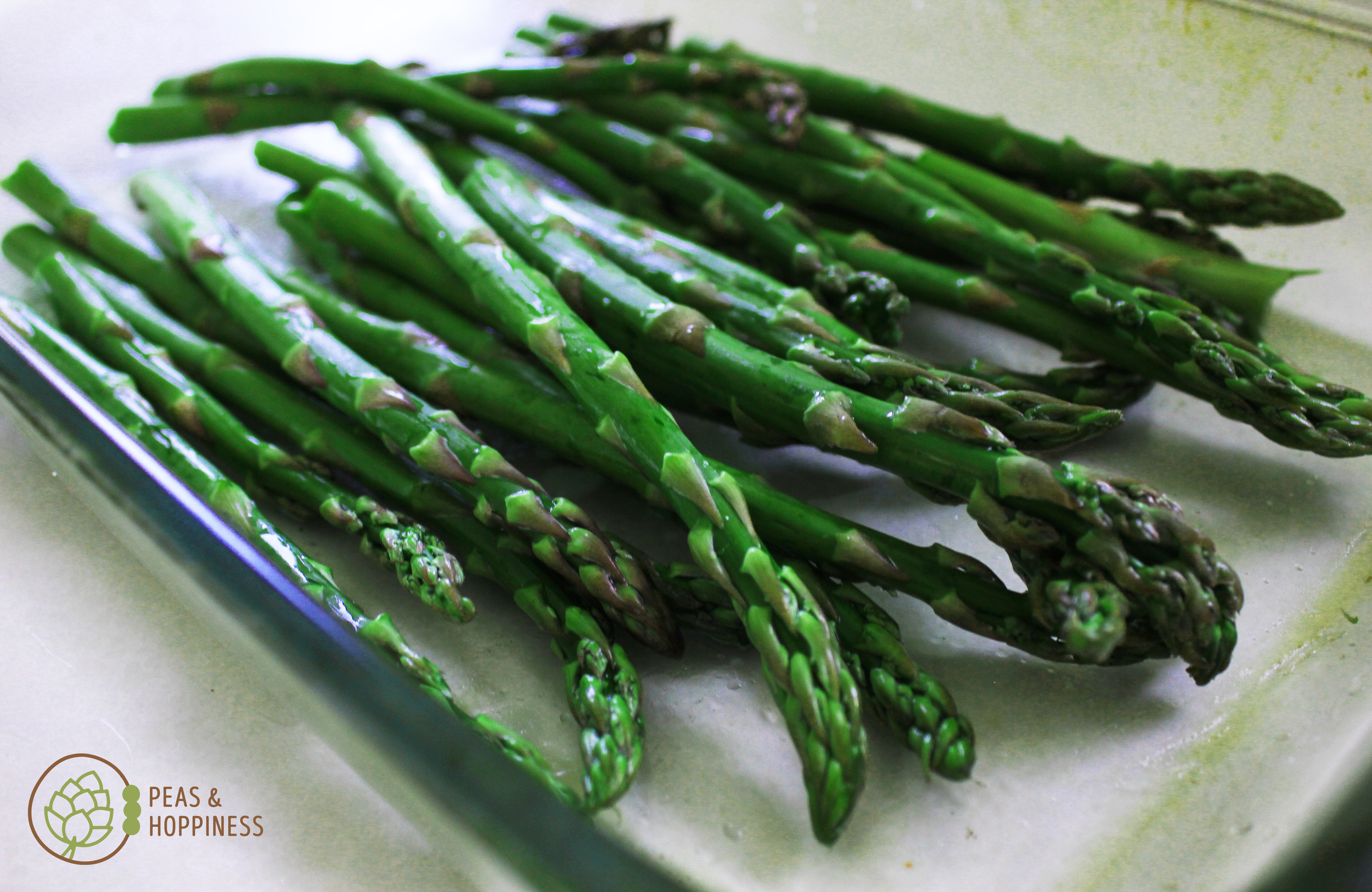
Why Asparagus Makes your Pee (ahem, urine) Smell Funny
There is a funny thing that happens after eating asparagus – have you ever noticed the odd scent your urine has after eating it? After just a few stalks you might notice this change.
Never fear; there’s nothing wrong with you! Asparagus contains asparagusic acid (ha, I know, right? it sounds like something from Harry Potter). Asparagusic acid contains a sulfur molecule. Sulfur, as it turns out, is pretty stinky; it’s the same molecule which gives things like garlic and skunk spray their very distinctive odors.
The sulfur in asparagusic acid isn’t quite as volatile as that in the other compounds, however. It’s not until it’s broken down in the digestive tract that the sulfur is released. About one-fourth of the population has the genetic code to break this down; if you’re one of the lucky one-in-four, then congratulations: asparagus makes your pee smell funny.
Note: another interesting fact is not everybody can smell the sulfuric scent of asparagus. Read more about this weird phenomenon here.
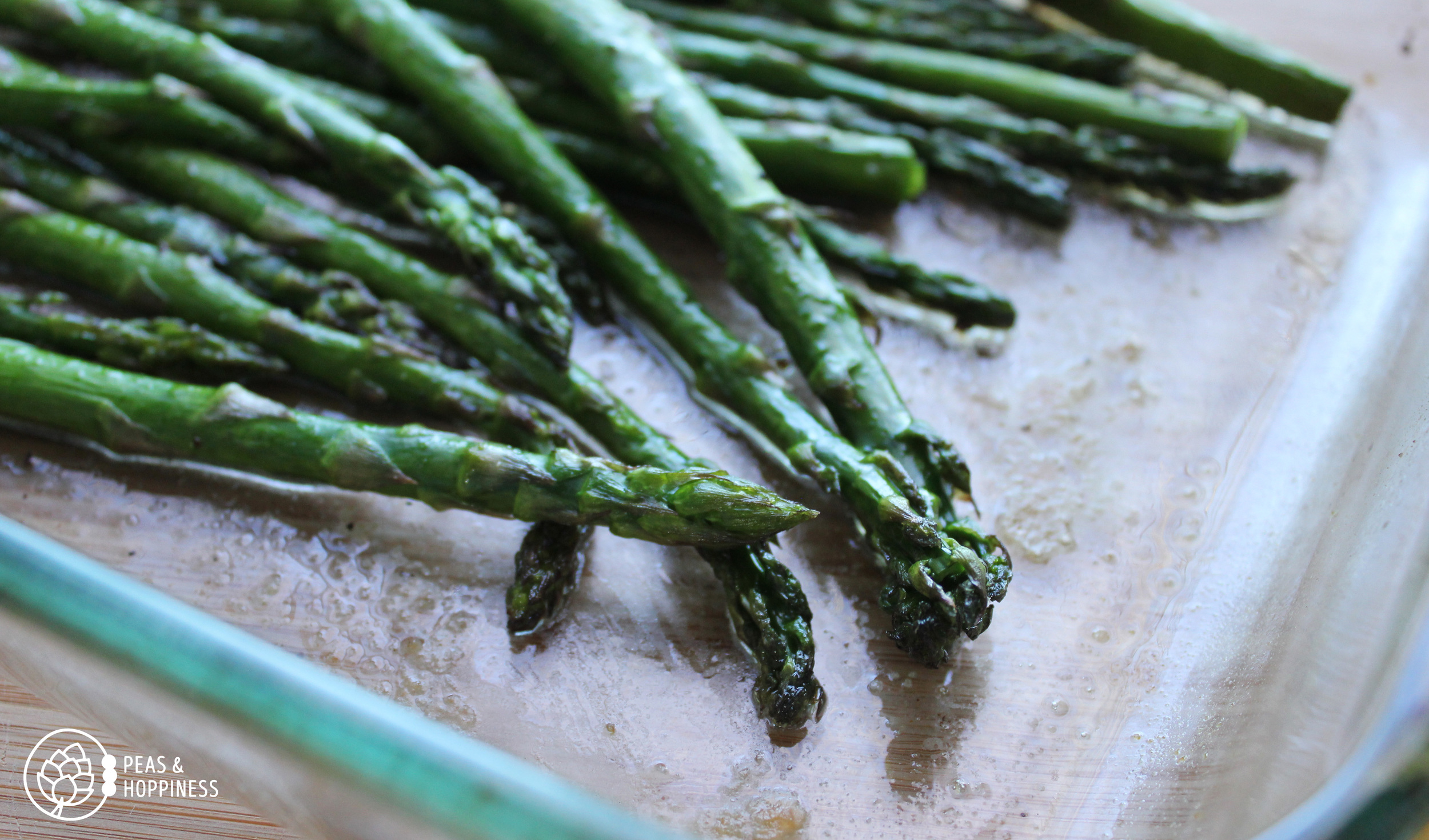
How to Make Asparagus Taste Great
Are you ready to make some of this pee-smelling goodness? Roasting is one of my favorite ways to cook vegetables (like this delicious roasted broccoli) because of the way it brings out the natural flavors in foods. Other types of high-heat cooking also work well, like searing in a cast iron skillet or grilling in a grill basket.
To cook asparagus, rinse stalks well in cold water. Snap off the base of the asparagus where it naturally breaks and discard the tough ends. Snapping instead of cutting with a knife naturally optimizes the amount of edible asparagus while naturally avoiding the stringy, tough ends.
Toss asparagus with two tablespoons olive oil, a half-teaspoon of coarsely ground salt, and one-fourth freshly ground black pepper and arrange one-stalk deep on a baking sheet.
Roast at 425 degrees Fahrenheit for about 15 minutes, turning asparagus in the pan about half-way through cooking. Roast to your desired tenderness (poke with a fork to check!); asparagus should be soft enough to poke with a fork and starting to brown, but not mushy.
To make sure you’re choosing the best quality produce year-round – in terms of nutrition AND flavor – download this free Guide to Seasonal Vegetables. You’ll learn what produce is best to buy fresh and which is better to find frozen or even canned.
Happy eating!
Ann from Peas & Hoppiness
Watch: How to Pick, Store, Prep, & Cook Asparagus
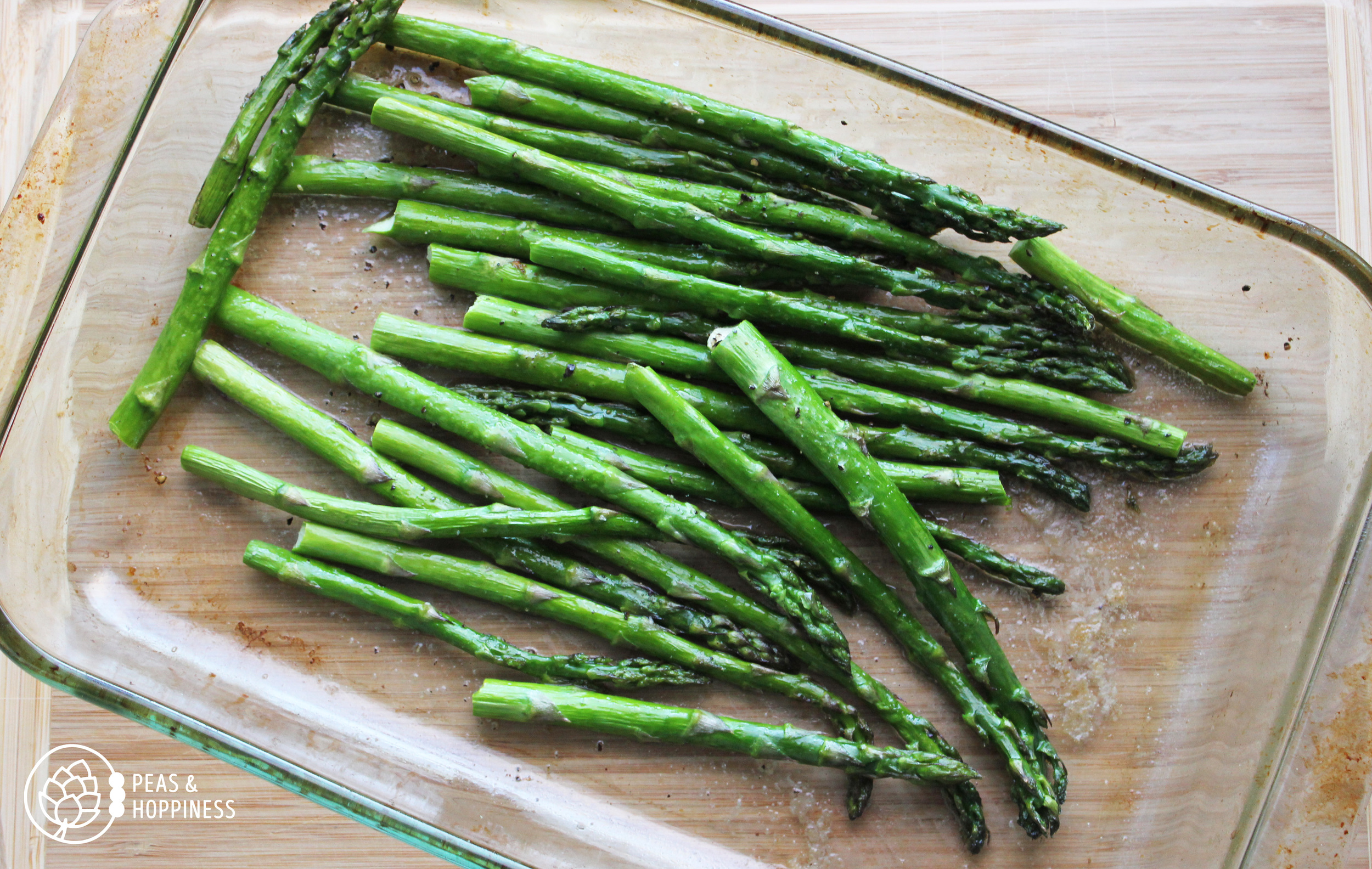
Easy Roasted Asparagus
Ingredients
-
2 lbs fresh asparagus (about 2 bunches)
-
2 Tbsps extra virgin olive oil
-
1/2 tsp coarsely ground salt
-
1/4 tsp freshly ground black pepper
Instructions
-
Heat oven to 425 degrees Fahrenheit.
-
Rinse asparagus well in cold water. Using hands, snap off the base of the asparagus where it naturally breaks and discard woody end. If desired, snap asparagus into 1-2 inch bite-sized pieces.
-
Toss asparagus with oil, salt, and pepper and arrange evenly in a baking dish or sheet without overlapping too many pieces.
-
Roast at 425 degrees Fahrenheit for about 15 minutes, turning asparagus in the pan about half-way through cooking. Asparagus should be soft enough to poke with a fork and starting to brown, but not mushy.
Printable Recipe // Serves 4 – Serving Size: 1 cup – Nutrients per serving: 106 calories — 7g total fat — 1g saturated fat — 0g trans fat — 0mg cholesterol — 300mg sodium — 9g total carbohydrates — 5g fiber — 4g sugar — 5g protein
Total time: 20-25 min // Prep time: 5 min // Cook time: 15-20 min
Serving Size: 1 cup
Pro Tip: Instead of roasting, try sauteing 12 to 15 minutes over medium to medium-high heat OR grilling (using a grill basket) for 20-25 minutes.
Leftovers: Refrigerate in airtight container 3-5 days. Do not freeze. For crispier asparagus, reheat in skillet, oven, or toaster oven instead of microwave.
Cooking Equipment: Baking sheet or dish
Snap asparagus into 2-inch pieces: snap base off asparagus using hands where it breaks naturally and discard woody end, then break into 2-inch pieces.
Don’t forget to download this FREE Seasonal Vegetable Guide before you go. Learn which veggies you should purchase fresh and which are better frozen or even canned, depending on the season of the year.